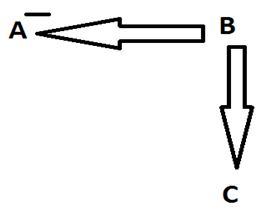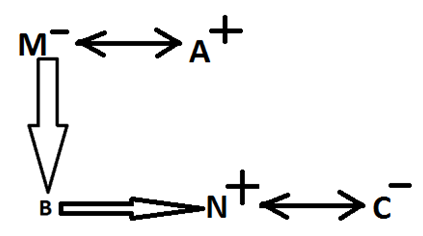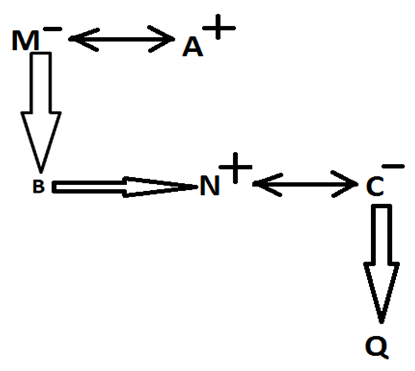What is a Blood Relation Question?
In this chapter, you will be given a paragraph with a few clues regarding the various relationships among the members of a family. You will be required to answer a few questions regarding the blood relation of that family.
Importance of Blood Relation in Bank Exams:
Blood relations is one of the most important chapters of the Bank and Insurance exams. You can easily score full marks in this section.
- You can expect 2-3 marks from this chapter in almost all the bank exams. In the case of mains, you can expect puzzles or seating arrangements based on blood relations.
- There are not many concepts in this chapter.
- You just need to understand the basic concept.
- Practice as many questions as possible.
You can practice the most expected blood relation questions asked in Bank exams with the Bank Test Series designed by the experts of BYJU'S Exam Prep.
Blood Relation Table
Before moving forward, we request you to kindly go through the below table to understand the various relationships established in a family.

Before moving ahead with the blood relation questions, let us discuss some basic symbols to represent various relations in blood relation questions.
We always use the + sign for a male.
We always use – signs for females.
To show the relation from one generation to another (Mother/Father to Son/Daughter), we use a single arrowhead vertically.
- To show the relationships within the same generation (siblings/cousins), we use a single arrowhead horizontally.
- To show the relation between husband & wife, we use a double arrowhead horizontally.
Blood Relation Complete Flow Diagram

Let us see the symbolic representation of various blood relations:
1. A is the father of B: Here we know the gender of A only. B can either be a son or daughter.
2. A is the mother of B: Here we know the gender of A only. B can either be a son or daughter.
3. B is the son of A: Here we know the gender of B only. A can either be a father or a mother.
4. B is the daughter of A: Here we know the gender of B only. A can either be a father or a mother.
5. B is the wife of A: Here we know the gender of both A and B.
6. A is the husband of B: Here we know the gender of both A and B.
7. A is the uncle of C: Here we know the gender of A only. B & C can be either male or female.
8. A is the aunt of C: Here we know the gender of A only. B & C can be either male or female.
9. C is the nephew of A: Here we know the gender of C only. A & B can be either male or female.
10. C is the niece of A: Here we know the gender of C only. A & B can be either male or female.
11. A is the paternal grandfather of C: Here we know the gender of A and B both.
12. A is the paternal grandmother of C: Here we know the gender of A and B both.
13. A is the maternal grandfather of C: Here we know the gender of A and B both.
14. A is the maternal grandmother of C: Here we know the gender of A and B both.
To watch concept classes and chapter-wise sessions on blood relations by exam-qualified experts, you can try our Bank Online Coaching.
Blood relation questions can be asked in two different ways.
Type I: Basic Blood Relation Questions
Direction: M is the mother of B. A is the husband of M. N is the only brother of B. C is married to N. Q is the only child of C. N does not have any sister. J is the father of A.
Solution:
M is the mother of B.
A is the husband of M.
N is the only brother of B.
C is married to N.
Q is the only child of C.
N does not have any sister (Which means B is definitely his brother).
J is the father of A.
Q.1) If A doesn’t have any grandson, then how is Q related to B?
Solution: We can see that Q is either the grandson or granddaughter of A. But as per the question, A doesn’t have any grandson which definitely assures that Q is A’s granddaughter. So Q is B’s niece.
Q.2) How is A related to C?
Solution: A is N’s father and C is N’s wife. So A is the father-in-law of C.
Q.3) How is B related to J?
Solution: B is the son of J’s son. So B is the grandson of J.
Type II: Blood Relation Based Puzzle
Direction: Study the information given below and answer the question based on it. Seven people P, Q, R, S, T, U, and V belong to the same family. It’s a three-generation family and two couples are there in the family. P is the father of T who is the mother of R. V has only one son and V is not married to T. Q is the sister of T. U is not a father of R. Detailed Solution:
P is the father of T who is the mother of R. Q is the sister of T. V has only one son and V is not married to T. So it means U or S is married to T but U is not the father of R so S must be married to T. V has only one son so V must be the wife of P and U must be the brother of Q and T. R is son or daughter of T and S.  Q.1) How is R related to Q? Solution: R is either nephew or niece of Q.
Q.1) How is R related to Q? Solution: R is either nephew or niece of Q.
Q.2) How is Q related to V? Solution: Q is the daughter of V.
Type III: Coded Blood Relation
Direction: Study the information given below and answer the questions based on it.
- A+B means A is the mother of B
- A-B means A is the sister of B
- A*B means A is the father of B
- A÷B means A is the son of B
- A=B means A is the brother of B
- A≠B means A is the daughter of B.
Q.1) Which of the following means P is the aunt of Q?
- P ≠ R * Q
- P + R * Q
- P – R + Q
- P – R ÷ Q
- P *R = Q
Solution:
P - R + Q means P is the sister of R, R is the mother of Q. P is the aunt of Q
Q.2) Which of the following means, S is the son of T’s daughter?
T * M + S + N T * M + S = N T + M * S – N S ÷ M ÷ T – N T * M ÷ S ≠ N
(A) T * M + S + N means T is the father of M and M is the mother of S who is the mother of N. That is S is the daughter of T.
(B) T * M + S = N means T is the father of M, M is the mother of S and S is the brother of N.
Therefore S is the son of T's daughter.
You can check other Reasoning Ability study materials here:
S.No | Topics |
1 | |
3 | |
4 | Order & ranking |
5 | |
6 | |
7 | |
8 | |
9 | |
10 | Statement & assumption |
11 | |
12 |
Type IV: Blood Relation with Circular Arrangement
Direction: Study the information given below and answer the questions based on it.
There are eight persons Rajan, Sanjana, Sushant, Deepa, Abhishek, Riya, Bipasha, and Harman seating around a circular table such that four of them are facing the center and the remaining are facing outside the center. There are two married couples and three generations in the family. Abhishek’s sister is seating to the immediate left of Rajan. Deepa, who faces the center, is Abhishek’s niece and she is seated opposite her grandfather. Sanjana is third to the right of her husband. Harman is Rajan’s son and is seating second to the left of his grandmother. Harman is second to the left of his father. Bipasha, who has only one daughter, is to the immediate right of her granddaughter. Abhishek is seated to the immediate left of his sister-in-law. Abhishek and Riya are not seating together and also they are not facing the same direction which is faced by Rajan.
Solution:
Let’s arrange the jumbled pieces of information systematically and find out the required solution. There are three generations in the family, and looking deeply; we get some results from the given information-
⇒Deepa is a female and she stands in the third generation.
⇒Sanjana is a female.
⇒Harman is a male and stands in the third generation.
⇒Bipasha is a female and stands in the first generation. Also, she has only one daughter.
To solve such types of questions try to make both, the family tree and the seating arrangements simultaneously.
⇒Names of the persons enclosed in rectangles and circles are males and females respectively.
⇒Persons connected with two parallel lines are spouses and similarly, persons connected with a single straight horizontal line are siblings. 

So we have seen two different ways in which blood relation questions can be asked. Sometimes blood relation concept is used in seating arrangements as well to make those questions tougher. That application of blood relations will be discussed in the basics of seating arrangement.
Type IV: Blood Relation with Linear Arrangement
Direction: Read the information carefully and answer the following questions.
There are eight members A, B, C, D, E, F, G, and H in the family. They sit in a straight line, some facing north while others facing south. There are three generations in the family with three couples. Four of them are male while others are female.
C faces South. F is a male and he sits on one of the extreme ends. F faces the opposite direction of his wife. A is the sister-in-law of H and daughter-in-law of C. A sits third to the right of her daughter.
G is the son of H and he sits second to the right of his cousin. C has two children, one male, and one female. B is the mother-in-law of D and sits to his immediate right. F sits to the immediate left of his brother-in-law, D. C does not sit near his grandson. No two persons seating together face the same.
Solution: A is the sister-in-law of H and daughter-in-law of C. C has two children, one male, and one female. B is the mother-in-law of D. F is the brother-in-law of D. A is the sister-in-law of H and daughter-in-law of C. G is the son of H. C has two children, one male, and one female. B is the mother-in-law of D and sits to the immediate left of his brother-in-law, D.
These lines give us the family tree. 
Now we have to arrange them in the linear form. No two persons seating together face the same direction. This means that the direction will be alternated.
F is a male and he sits on one of the extreme ends. F sits to the immediate left of his brother-in-law, D. B is the mother-in-law of D and sits to his immediate right.
There are two possible cases. 
F faces the opposite direction of his wife. A sits third to the right of her daughter. A’s daughter is E.
In both cases, the directions of A and F will be the opposite. Only one possible case is there in both cases. 
G sits second to the right of his cousin. E is the cousin of G.
C faces South. C does not sit near his grandson. G is the grandson of C.
In Case I, C will face North so this case can be eliminated. Case II is correct. ![]()
This is the final arrangement.
Key Points Related to Blood Relations:
- Never assume any person to be male or female if not specified in the question.
- Step by step approach can always give the solution for blood relation questions, doesn't matter whether the question is a coded or simple one.
The chapter can be useful for the following exams:
S. No. | Name of the exam |
1 | |
2 | |
3 | |
4 | |
5 | |
6 | |
7 | |
8 | |
10 | |
12 |
If you are aiming to crack SBI/IBPS Exams 2023, then join the Online Classroom Program where you will get:
- Live Courses by Top Faculty
- Daily Study Plan
- Comprehensive Study Material
- Latest Pattern Test Series
- Complete Doubt Resolution
- Regular Assessments with Report Card
Click here to access Bank Test Series
Why BYJU'S Exam Prep Test Series?
- Get better at every level of your preparation with unlimited test series, based on the latest exam pattern.
- Assess areas of weaknesses & track improvements with in-depth performance analysis
Download the BYJU’S Exam Prep App Now.
The most comprehensive exam prep app.
#DreamStriveSucceed



























Comments
write a comment